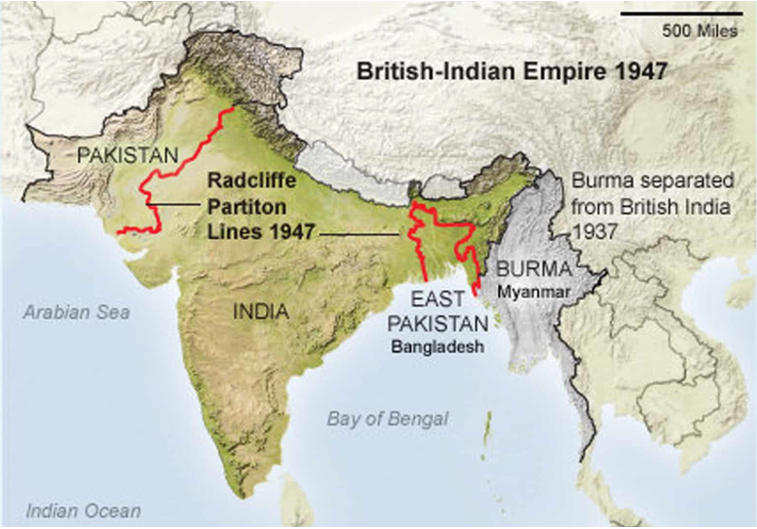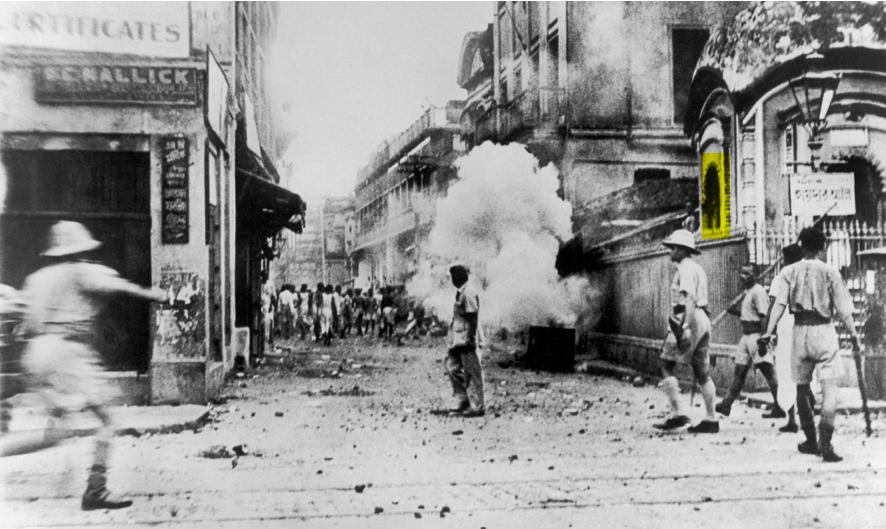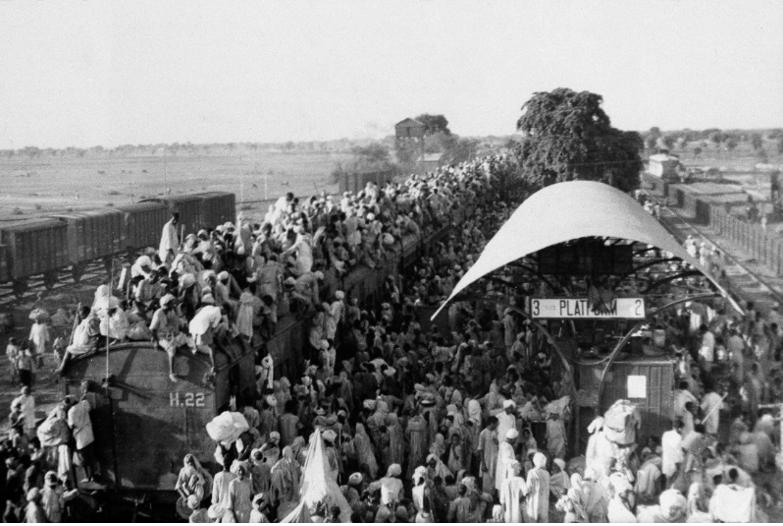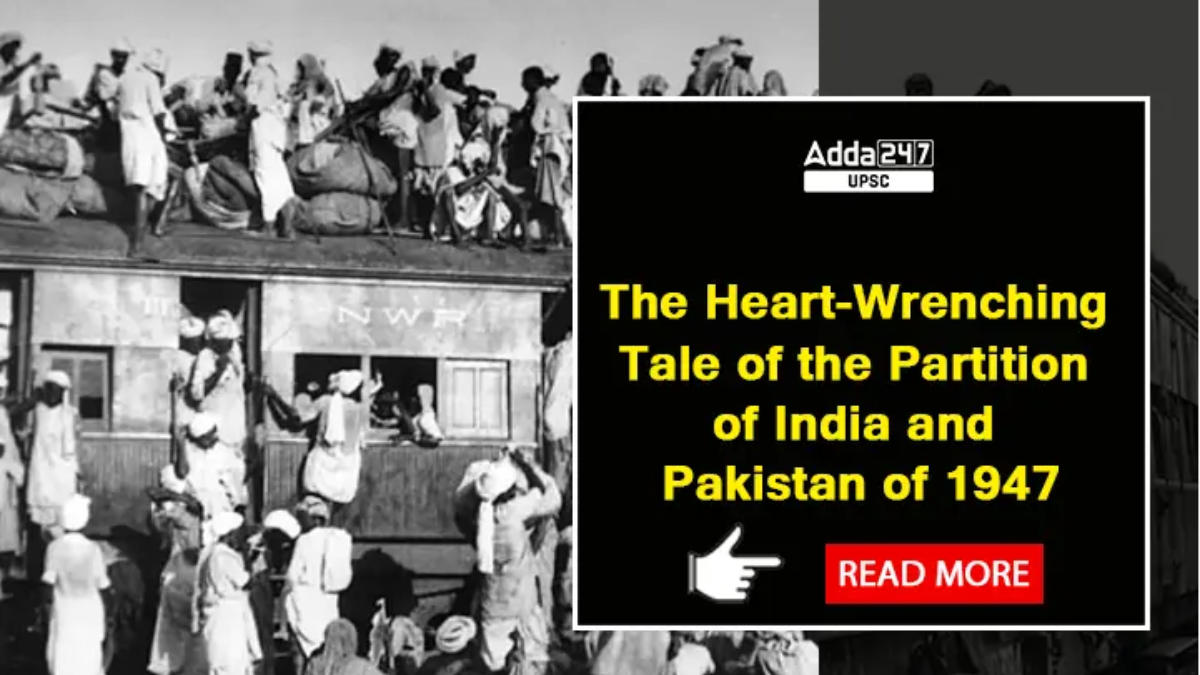Table of Contents
Partition of India 1947: This article explores the circumstances that led to the Partition of India and Pakistan in 1947 and offers insights into the timeline of events at the time. For candidates studying for the IAS exam in particular, this content is an invaluable tool for improving their understanding of India’s modern history.
Partition of India 1947- Introduction

History of Partition of India 1947
- To truly understand the Partition of India, we must delve into the historical context of British colonial rule in India.
- For nearly two centuries, India had been under British dominion, a period marked by economic exploitation, cultural assimilation, and political manipulation.
- However, as the winds of change swept through the world post-World War II, the pressure for decolonization intensified.
- The demand for an independent India gained momentum, spearheaded by leaders like Mahatma Gandhi, Jawaharlal Nehru, and Muhammad Ali Jinnah.
- The Indian National Congress, representing a broad spectrum of Indians, sought a united and independent India, whereas the All-India Muslim League, led by Jinnah, advocated for a separate Muslim state due to perceived communal differences.
Partition of India 1947 – Mounting Tensions and Communal Strife
- As negotiations between the Indian leadership and the British reached a critical juncture, the communal tensions between Hindus and Muslims escalated.
- The issue of partition started to loom larger as religious and cultural differences were exploited to create divisions within society.
- The 1946 Direct Action Day, initiated by the Muslim League, resulted in widespread violence and rioting, foreshadowing the horrors that were to come.

Partition of India 1947 – Radcliffe Line
- With the inevitability of partition becoming apparent, the British government appointed Sir Cyril Radcliffe to draw the boundary line separating India and Pakistan.
- This hastily executed task, devoid of a thorough understanding of the intricate social fabric, led to arbitrary divisions of regions, communities, and families. The Radcliffe Line became a physical embodiment of the pain and tragedy that would ensue.
Partition of India 1947 Massive Effects
Human Tragedy and Mass Migration: The partition of India in August 1947 is one such example where there is the report of approximately 14 million to 18 million people moved in the massive migration effect.
- The partition led to one of the largest mass migrations in human history. Millions of Hindus, Muslims, and Sikhs embarked on treacherous journeys to reach their newfound homelands.
- The violence that accompanied this migration was unprecedented, resulting in an estimated death toll ranging from several hundred thousand to two million people.
- The stories of displaced families, the anguish of lost loved ones, and the scars of communal violence are etched into the collective memory of the subcontinent.

Partition of India 1947 Consequences
- The partition left an indelible mark on the social, political, and cultural landscape of India and Pakistan.
- The newly formed nations faced the monumental task of rebuilding amidst the chaos.
- The scars of partition manifested in strained diplomatic relations, territorial disputes, and ongoing conflicts, particularly over the region of Kashmir.
- The wounds inflicted during those turbulent times continue to impact the two nations’ relations and regional stability.
Gandhi’s Assassination and Jinnah’s Death - Tragically, the architects of the independence movement did not live to see the fruits of their labor.
- Mahatma Gandhi, the guiding light of non-violent resistance, was assassinated in 1948, leaving behind a nation mourning the loss of its moral compass.
- Likewise, Muhammad Ali Jinnah, the founding father of Pakistan, passed away a year after partition, leaving his nation grappling with the challenges of nation-building without his leadership.
Partition of India – Expression of Art and Culture
- The impact of the partition of India and Pakistan is also reflected in literature, art, and cinema.
- Writers such as Khushwant Singh, Saadat Hasan Manto, and Ismat Chughtai have captured the human experience of partition with powerful stories that cross borders.
- Films like Train to Pakistan and Garm Hava depict the emotional turmoil and tragedy experienced by people on both sides of the divide.
- These creative works remind us of the shared history and pain that connect the two nations.
Partition of India – Long Road to Reconciliation
- Despite the bitterness and animosity that initially characterized the India-Pakistan relationship, efforts at reconciliation have not been entirely absent.
- Diplomatic initiatives, people-to-people interactions, and cultural exchanges have attempted to bridge the gap that partition had created.
- However, deep-seated historical grievances, ongoing conflicts, and political considerations have often hindered lasting progress.
Partition of India 1947 Conclusion
The Partition of India and Pakistan in 1947 remains a poignant chapter in the annals of human history. It stands as a reminder of the havoc that can be wrought by divisive politics, religious intolerance, and the unchecked ambitions of colonial powers. The scars of partition continue to influence the subcontinent’s trajectory, serving as a stark reminder of the importance of unity, empathy, and diplomacy in the face of adversity. As India and Pakistan navigate their shared past and complex present, it is essential to acknowledge the mistakes of history while striving towards a more peaceful and harmonious future.
| Related Articles | |
| Making of the Constitution | Constitutional Morality Explained |
| Important Banking Sector Acts | Scheduled and Tribal Areas |
| Fundamental Duties, Article 51A | Unemployment Rate in India |



 TSPSC Group 1 Question Paper 2024, Downl...
TSPSC Group 1 Question Paper 2024, Downl...
 TSPSC Group 1 Answer key 2024 Out, Downl...
TSPSC Group 1 Answer key 2024 Out, Downl...
 UPSC Prelims 2024 Question Paper, Downlo...
UPSC Prelims 2024 Question Paper, Downlo...
